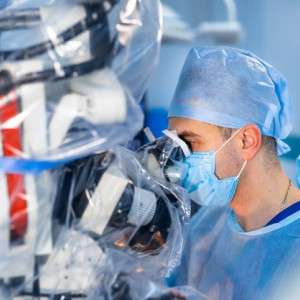Content Updating...…Read more...
Treatment of Prostate Cancer
Once diagnosed, prostate cancer is treated according to the factors associated with the disease. The general condition, age and health of the patient are taken into account. This type of cancer is very common in men. It also ranks second in cancer-related mortality rates. The prostate is a glandular organ found only in men, about the size of a walnut and located under the bladder. Cancer is caused by the abnormal development of certain cells. Cancers can also develop differently from a single point or from several points.
What is Prostate Cancer?
What is prostate cancer? This type of cancer is caused by abnormal and uncontrolled proliferation of cells in the prostate, which is part of the male reproductive system. Over time, uncontrolled proliferation of cells can lead to the development of malignant tumors. The prostate gland is just below the bladder. It is a walnut-sized organ that surrounds the urethra. It causes the secretion of the hormone testosterone, which has a role in regulating the functions of the reproductive system in the male body. It also maintains the vitality and movement of the sperm. Prostate enlargement that occurs at an advanced age is also commonly called prostate. It is more likely to occur in older men.
Symptoms of Prostate Cancer
Symptoms of prostate cancer usually appear in the later stages. It has many different symptoms. It is a very insidious disease. Early diagnosis is very important. It is known that symptoms can also be seen in different prostate problems. But the following are among the symptoms of prostate cancer in general:
- Polyuria (frequent urination)
- Difficulty urination
- Blood in urine or sperm
- Erection problems
- Involuntary weight loss
- Pain during ejaculation
- Pain in the lower back, buttocks or legs
- Urinary tract problems
- Intermittent slow voiding
Diagnosis of Prostate Cancer
There are certain methods for diagnosing prostate cancer. However, the disease shows no symptoms in the early stages. Symptoms such as enlargement of the prostate gland, frequent urination and the need to urinate at night can be seen. It can also cause painful urination. It can also affect sexual function. Prostate cancer can cause pain in areas such as the spine, buttocks or ribs. For these symptoms, an examination should be carried out. Different methods are used to determine whether an individual has prostate cancer.
Stages of Prostate Cancer
The stages of prostate cancer, as with other types of cancer, are listed under four headings. These are:
- In the first stage, the cancer is confined to the prostate. The cancer is only partly in the prostate gland.
- In the second stage, the cancer has progressed but is still confined to the prostate gland.
- In the third stage, the cancer spreads to the tissue capsule surrounding the prostate. This spread can sometimes involve the sperm sac.
- In stage four, the cancer has spread to the lymph nodes, organs and the sperm sac. In short, it has reached the outside of the prostate.
What are the Treatment Modalities of Prostate Cancer?
What are the Treatment Modalities of Prostate Cancer? Different modalities apply for treatment of prostate cancer. Surgery, radiotherapy and hormonotherapy are among those modalities. The modality is decided based on the patient’s general medical condition and age. The best modality is preferred for the health of the patient. Thus, a detailed treatment program is planned.
You may also be interested in

Updating Content...…Read more...

Standard laparoscopic images are acquired by means of a single camera and give a two-…Read more...



facebook
instagram